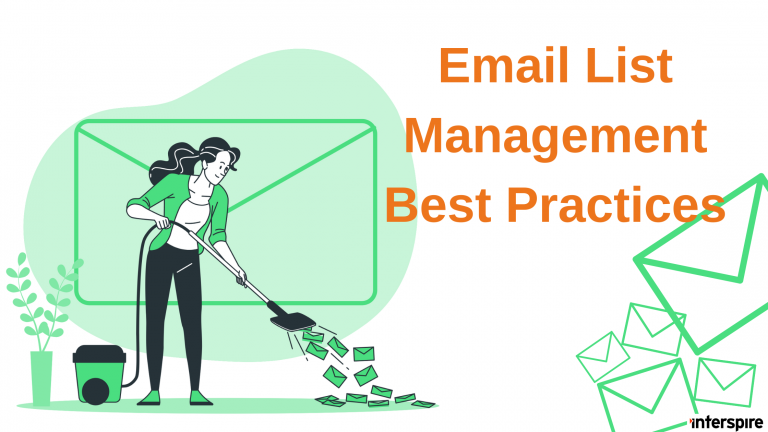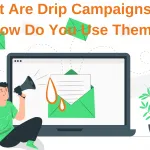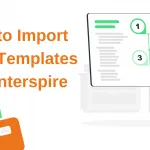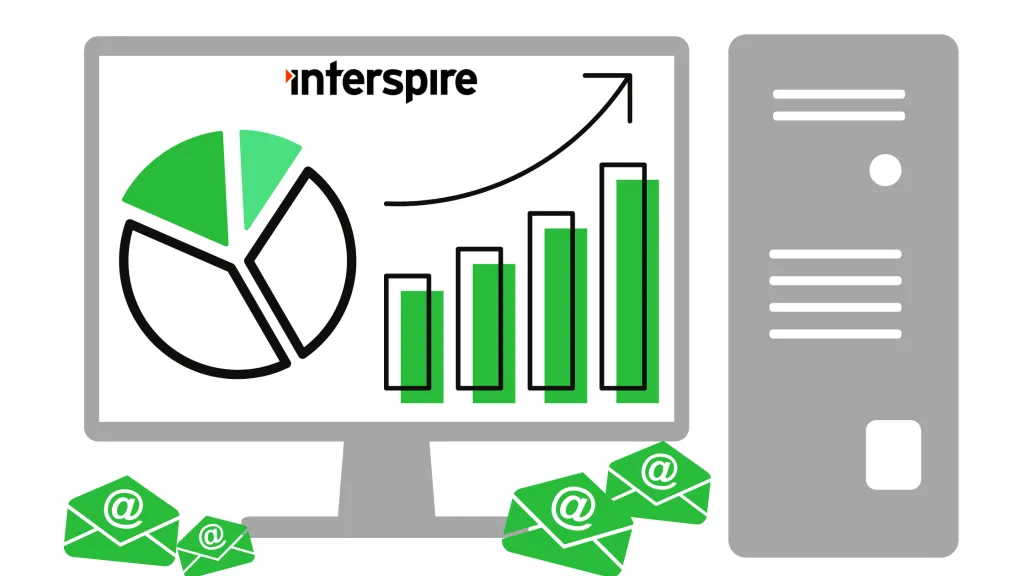Email list management is one of the most important aspects for successful email marketing. Learn what list management is, why it is important, its benefits, and the best practices to maintain a healthy email list.
What is Email List Management
Email list management is the process of maintaining your contact list healthy, clean, and accurate.
Using double opt-in sign up, setting expectations, giving customers options on managing their subscriptions, removing inactive and invalid email addresses, leveraging custom fields and segmentation, and sending out re-engagement emails are all part of the healthy management of your email lists.
The Benefits of Email List Management
Improve Deliverability Rates
One of the keys to high deliverability rates is to send relevant emails to valid email addresses. If you bounce rate is very high sending platforms will penalize your reputation.
Decrease the likelihood of getting blacklisted
Closely related to the above, having a healthy engaged list decreases the likelihood of your emails being reported as spam or getting blacklisted altogether. Sending mail over and over again to invalid email addresses or spam traps is one of the fastest ways to end up on email blacklists.
Lower costs
Some email marketing platforms structure their costs based on the number of contacts you have in your lists. Removing invalid and inactive email addresses will lower your costs on those platforms.
More accurate reporting and analysis
Having well-managed contact lists will help in generating more reliable data. You will be better able to determine how effective your email marketing strategies and email campaigns are.
Save time and effort
It will allow you to more quickly identify and eliminate contacts that may not be significant to you and your business.
How to Start with Email List Management
Most of the email list management activities can be done from within your email automation software of choice. It usually starts with getting explicit consent from your customers when they subscribe to your list. The next step is to communicate expectations and options. And lastly, continuous implementation of email list hygiene practices.
Ask Permission
You should always confirm that you have customer’s permission before sending out email campaigns. When it comes to requesting permission, you usually have two options. The first is single opt-in, in which users click a subscribe button and give you basic information like their name and email address; the second is double opt-in, in which users confirm their subscription through email after signing up on your website.
Using double opt-in is advised as it enables you to obtain explicit consent from the customers. This will also give you a higher assurance that you are connected to a valid address.
If after some period of time the customer did not confirm their subscription, you can send a reminder via an autoresponder. The reminder should prompt the customer to complete the confirmation process, otherwise, their initial subscription will not be completed and may be disregarded.
Some email marketing automation platforms such as Interspire, can be configured to have these unconfirmed contacts automatically removed from your list if you don’t hear back from them within the time frame you specify.
Set Expectations or Provide Options
Set expectations and provide them an overview of the type of email content will be receiving from you as well as the frequency at which they may expect emails from you.
In addition, you could give customers more control by giving them options on managing their subscriptions. Ask about their email content preferences regarding products, services, and information, directly or through a survey. An option on how often they would want to receive emails from you could also be offered to them. This will help you tailor which email campaign is ideal for each contact sent at the right frequency. This will help keep you subscribers engaged without turning them off with excessive email volume.
Email List Hygiene Best Practices
Email list hygiene involves many different activities. Here are some of the main ones below.
Bounce Processing
Undeliverable emails are also referred to as bounced emails. Emails can bounce for a number of reasons, such as an invalid email address, full mailbox, poor sender reputation, and others.
Automatic bounce processing will process the bounce notifications and will update the status of your contacts in your lists accordingly. Your email marketing software should no longer attempt to send emails to those addresses. Depending on your configuration, these email addresses can be configured to be completely deleted from your email lists after a predetermined period of time.
Maintaining very low email bounce rates is a major indicator of being a good email citizen and keep a good sender reputation.
Leverage tagging or custom fields and segmentation features
Custom fields – which can also be used as tags – and segmentation features are common in email marketing software. You should take advantage of these. Using custom fields you can segment your audience and send the most relevant content to the right subscribers. This will increase your engagement rates and keep your list of subscribers happy.
Send out a re-engagement campaign
Inactive email address refers to your contacts that have not engaged with your mailings for a while, it may have been for weeks or a few months. Some advocate ruthless pruning of unengaged contacts. A more measured approach may some time be beneficial. There could be a variety of reasons for a disengaged subscriber, and before completely removing them from your contact lists, try re-engaging them first with a well-crafted re-engagement campaign.
Schedule a time for cleaning your list
Having a schedule to manually review your mailing lists and segments will help you determine if they are still aligned with your business and audience’s goals. This could also include running your lists through an email verification service such as NeverBounce or ZeroBounce. This does not have to be a weekly or monthly affair, you could set the schedule of your maintenance every quarter or every 6 months.
Things to Avoid to Maintain a Email List Healthy
Maintaining a healthy list includes avoiding certain behaviors.
Sending too many emails
Do not spam your email list with a large number of irrelevant emails. Make sure your email campaigns are well-planned, with every email full of valuable content valuable.
Buying or scraping email lists
Never buy email lists. These lists are often of low quality, they could be littered with spam traps, and most importantly their members did not give their consent to receive your emails. This is one of the fastest ways to kill your reputation. The same goes for scraping email addresses.
Additionally this may be illegal in many jurisdictions with anti-spam laws such as the CAN-SPAM act, GDPR, CASL, and others.
Becoming Complacent
A smaller email list does not necessarily mean a healthy email list. This is why it is important to stay updated about the trends, understand your statistical data (bounce rate, list growth rate, unsubscription rate, and others), and be aware of the pulse of your list of contacts.
How to Measure the Effectiveness of Email List Management
Effective email list management can be measured by analyzing the statistics of your email campaigns. On the technical side you will find your delivery rates to be higher, your bounce rates to be lower, and your sender reputation to be on the up side.
Here are some guideline to follow:
- SmartInsights offers a very good discussion on delivery rates and suggests they should be over 90% and ideally the higher.
- Codeless.io and others suggest that a good bounce rate should be no higher than 2-3%.
- Your spam complaint rate should not be higher than 0.08 to 0.1%. The majority of the email service providers will suspend your accounts if your spam rate is above those numbers.
These metrics are helpful, but monitoring your own statistical data from your campaigns over time is also important to gain valuable insights.
Beyond the technical numbers, on the results side you will find a more engaged subscriber base and aligned with your goals.
Conclusion
Email list management is a fundamental element in executing a successful email marketing strategy. It is important to maintain a healthy list to achieve high delivery rates and maintain an engaged audience, leading to better conversion rates and lower costs.



